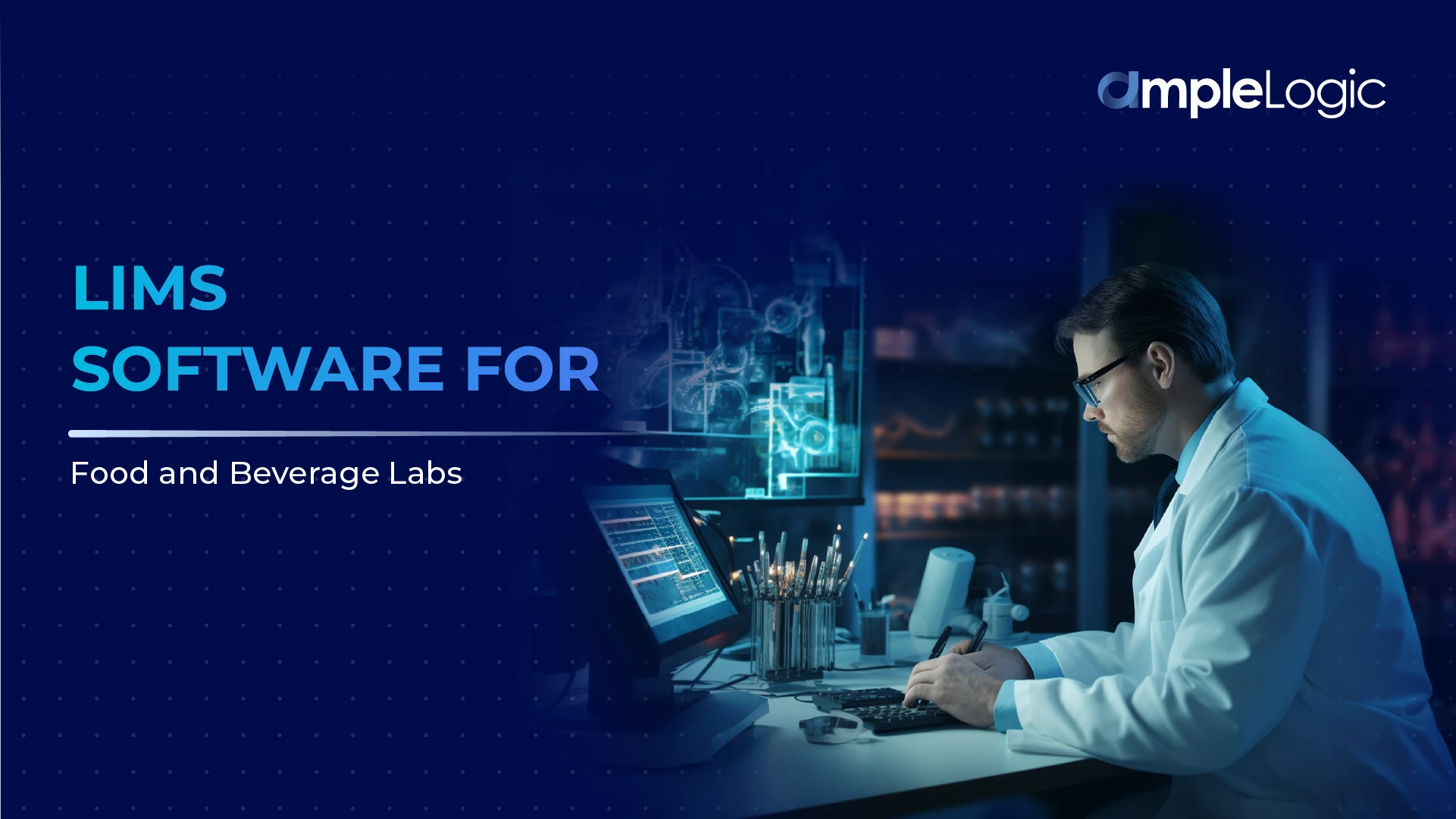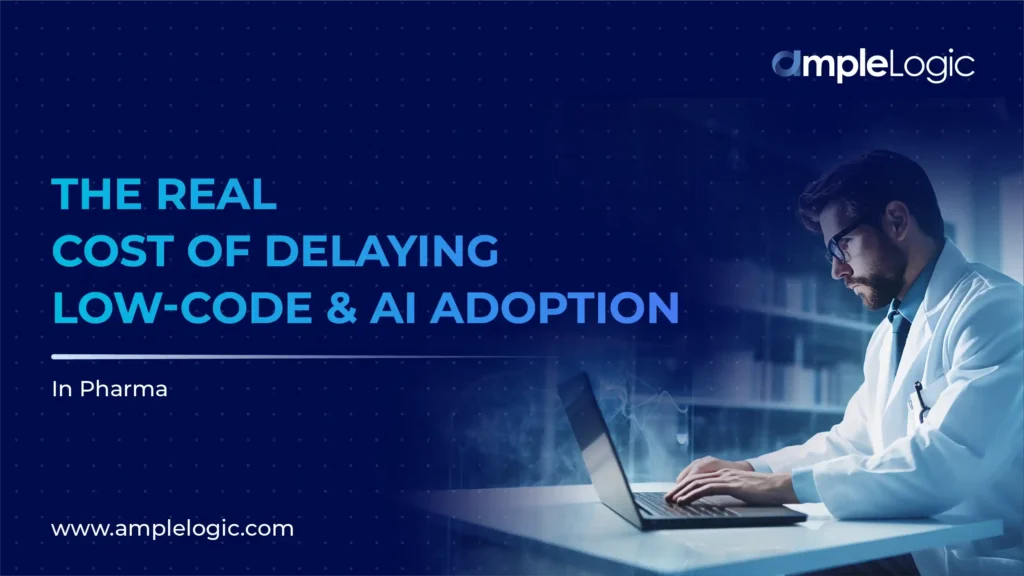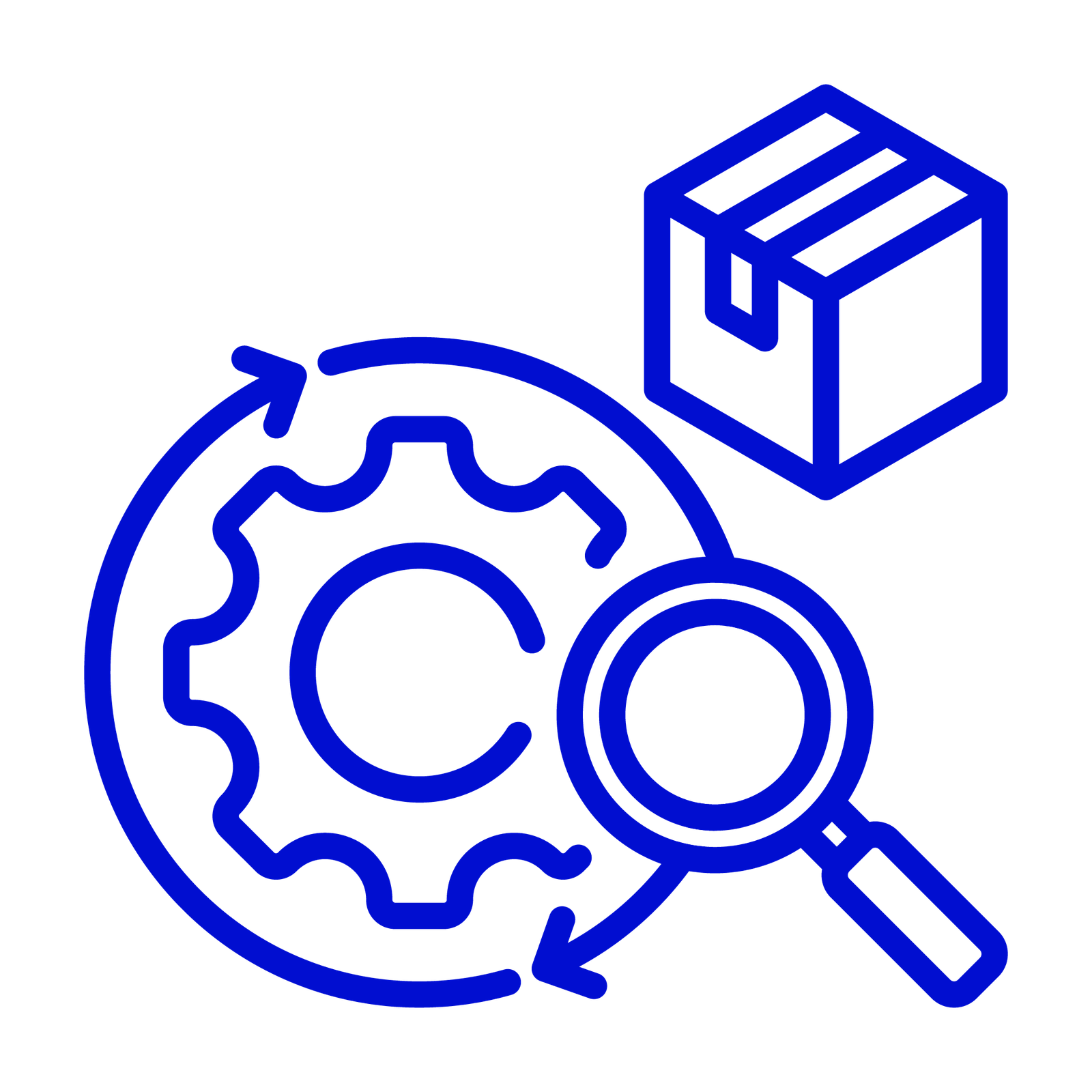
Ever wondered how your morning coffee, weekend snacks, or that artisanal cheese platter stay safe and delicious? Behind every bite lies an invisible hero: food testing labs armed with Laboratory Information Management System (LIMS) software. Let’s pull back the curtain on how this tech quietly revolutionizes what lands on your plate and why it matters more than you think.
In the food and beverage sector, where testing directly impacts public health and safety, LIMS software provides the systematic approach needed to maintain consistent quality assurance. Amplelogic, like other industry leaders, recognizes that food testing laboratories require specialized capabilities beyond generic laboratory management tools. From farm to fork traceability to shelf-life studies, food and beverage LIMS software must address industry-specific challenges while adapting to evolving regulatory requirements
Why Should Food Labs Care About LIMS? (And Why Should You?)
Did you know? A single contaminated batch could cost millions in recalls. LIMS turns this nightmare into a solvable puzzle, tracing ingredients across continents. Again, imagine a world where every food recall takes weeks instead of hours, where expired products slip through undetected. Scary, right? That’s the reality LIMS software prevents.
- Regulations:
Testing labs must navigate complex regulatory frameworks from organizations like the FDA, USDA, and EFSA, requiring meticulous documentation, traceability, and audit trails. These stringent guidelines demand accuracy in record-keeping that manual systems simply cannot reliably provide.
- Traceability:
LIMS knows the entire life story of a food or beverage. When every ingredient’s journey matters, cloud-based LIMS becomes the ultimate biographer, documenting pH levels, harvest dates, and even which truck carried it. Complete sample tracking from raw material intake to finished product analysis is essential for safety monitoring and potential recall management.
- Data Integrity & Reporting:
Labs process thousands of samples daily. Without LIMS, it’s like reading on 100 tabs. Automated workflows? Managing extensive datasets while generating compliance-ready reports demands robust data validation and authentication processes. The volume of testing data generated daily requires systems that can maintain integrity while facilitating access.
- Scalability Needs
As testing demands fluctuate with production volumes and new product development, laboratories need solutions that can scale operations efficiently without compromising accuracy. Seasonal variations and market demands often require rapid adjustment of testing capacity.
- Complex Testing Workflows
Food labs regularly perform diverse analyses, from microbiological testing to nutritional content and allergen detection, often across multiple facilities with varying protocols. Coordinating these multifaceted workflows without a centralized system creates significant logistical challenges.
Must Read: How to Successfully Implement LIMS and Drive Laboratory Efficiency
Benefits: LIMS Superpowers
Modern food and beverage LIMS software offers specialized functionality designed to address industry-specific requirements:
- Sample Management and Tracking
Comprehensive tools track samples from receipt through testing to disposal, maintaining a chain of custody and complete documentation throughout the sample lifecycle. Barcode and RFID integration enable quick, accurate sample identification that reduces errors and improves throughput.
- Shelf Life Studies and Stability Testing
Why does your yogurt last weeks? LIMS doesn’t guess, it knows. Stability testing modules simulate months in days, predicting expiration dates by systematically tracking quality parameters over time. Your favorite snack stays crispy because LIMS said so.
- Allergen Detectives
Gluten, nuts, soy: hidden threats are present everywhere. LIMS acts like a food quality inspector, flagging contaminants at parts-per-million levels. That “may contain” warning? Often, it’s there because LIMS spotted a risk no human eye could catch.
- Workflow Automation and Customization
Configurable workflows match specific laboratory processes, from microbiological testing to chemical analysis, standardizing procedures while maintaining flexibility. Amplelogic recognizes that workflow customization represents one of the most critical aspects of LIMS implementation in food testing environments.
- QR Code for Detailed Report:
Amplelogic’s Laboratory Information Management System (LIMS) includes a useful feature that generates QR codes linked directly to batch record files. By scanning the QR code, users can easily retrieve full reports, monitor batch specifics, and enhance overall knowledge management within the laboratory.
- Reporting and Analytics
Customizable reporting tools generate everything from Certificates of Analysis to regulatory submissions and trending reports, supporting data-driven decision making. Amplelogic LIMS’ approach to analytics helps laboratories identify patterns and opportunities for process improvement that might otherwise remain hidden in raw data.
- Quality Control and Compliance Management
Built-in support for industry standards, including ISO 17025, FSMA requirements, and FDA regulations, ensures that laboratories maintain compliance without administrative burden. Automatic flagging of out-of-specification results helps prevent quality issues before products reach consumers.
Cloud-Based LIMS vs. On-Premises Solutions for Food Testing Labs
The deployment model for LIMS software significantly impacts functionality, accessibility, and total cost of ownership. The differences between deployment models are:
| Feature | Cloud-Based LIMS | On-Premises LIMS |
|---|---|---|
| Infrastructure | Hosted on vendor servers | Installed on the lab's servers |
| Access Method | Via an internet browser | Local network access |
| Access Method | Via an internet browser | Local network access |
| IT Burden | Minimal internal IT requirements | Significant internal IT support is needed |
| Implementation Speed | Rapid deployment | Longer implementation timeline |
| Cost Structure | Subscription-based (OpEx) | Large upfront investment (CapEx) |
| Updates | Automatic, continuous updates | Manual, scheduled updates |
| Scalability | Easily scales with usage | Requires hardware expansion |
| Remote Access | Built-in remote capabilities | Requires additional security setup |
Benefits of Cloud-Based LIMS for Food Testing
Why are leading labs ditching servers? Picture this: A lab in Mumbai updates a recipe, and a QC team in Toronto sees it instantly. Cloud based LIMS isn’t just software; it’s a global food safety net, accessible from any smartphone. Amplelogic’s cloud solutions enable laboratories to access and manage data from diverse locations, allowing them to coordinate from anywhere. Amplelogic’s cloud based LIMS approaches also align with industry trends, providing food testing laboratories with secure, accessible platforms that scale with laboratory needs while minimizing IT overhead and maximizing operational flexibility.
Also Read: Pharma IT Cost Reduction Strategies That Save 70%
Regulatory Compliance and LIMS in the Food Industry
Food testing laboratories must comply with numerous regulations and standards, including:
- FDA Food Safety Modernization Act (FSMA)
- ISO 17025 laboratory accreditation requirements
- Current Good Manufacturing Practices (cGMP)
- Hazard Analysis Critical Control Point (HACCP) principles
- Country-specific export requirements
How does Amplelogic Food and Beverage LIMS Software support compliance?
Amplelogic LIMS software facilitates compliance through:
- Comprehensive Audit Trails: Full traceability for all system actions and data modifications, creating unalterable records of who did what and when.
- Electronic Signatures: Integrated approval workflows with role-based permissions that meet 21 CFR Part 11 requirements for electronic records.
- Method Validation: Structured approaches to method validation documentation and verification that satisfy regulatory expectations.
- Automated Compliance Checking: Real-time verification that results meet specification limits and flagging of results requiring further investigation.
Amplelogic food and beverage LIMS software works with food testing laboratories to implement compliance-focused workflows that address these specific regulatory requirements, reducing compliance risks while streamlining documentation.
How Amplelogic LIMS Helps Food Labs Stay Compliant
- Audit Trails: Keeps a full history of every action from start to end.
- Electronic Signatures: Secure sign-offs with role-based access that follow 21 CFR Part 11 rules.
- Method Validation: Helps labs show that their testing methods are correct and meet standards.
- Auto Compliance Checks: Turns test data into clear, useful reports and insights. Instantly flags results that don’t meet safety limits
- Built for Food Industry Rules: Supports FSMA, ISO 17025, HACCP, and more
The Future Tastes Like LIMS
What’s next? Imagine LIMS that predicts foodborne outbreaks before they happen, or AI chefs that use LIMS data to invent recipes. Far-fetched? Labs are already beta-testing these. The line between food science and sci-fi is blurring, and Amplelogic food and beverage LIMS software is holding the pen.
Conclusion
In food and beverage labs, it ensures processes run smoothly, data is accurate, and safety standards are met. With Amplelogic’s AI-powered LIMS, which is designed for the industry, even small labs can maintain high standards and meet regulatory expectations with confidence.
By implementing specialized Amplelogic LIMS software, food and beverage laboratories position themselves at the top of the food chain, delivering accurate and timely results that protect both consumers and brands in an increasingly scrutinized industry. Schedule a free demo today and stay compliant with Amplelogic. For further blogs like this, please visit Amplelogic Resources!





























